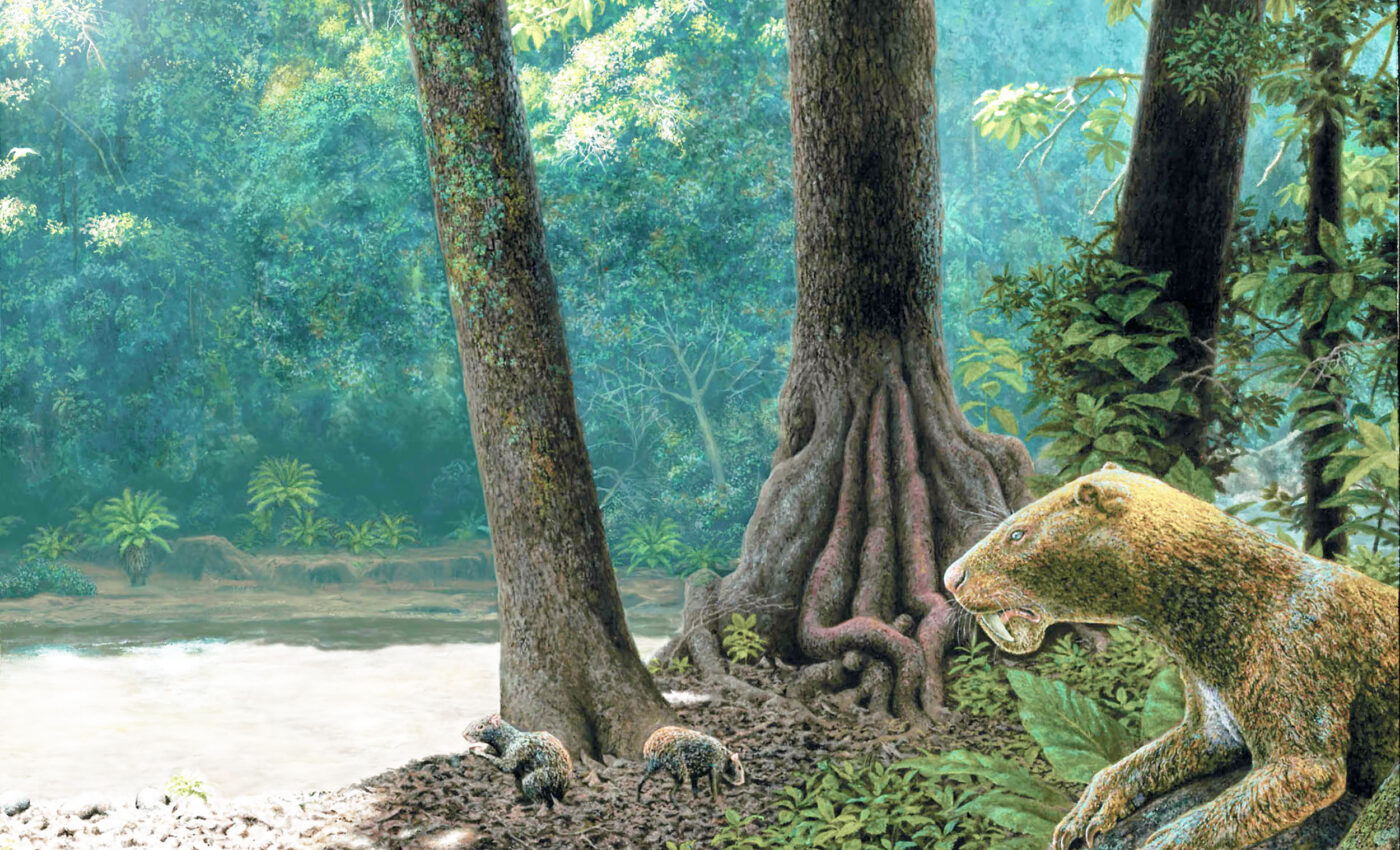
Extraordinary discovery: Saber-toothed marsupial fossil found in the Tatacoa Desert
Researchers have unearthed the most complete skeleton of a saber-toothed marsupial in the Tatacoa Desert, Colombia. This discovery will dramatically improve our understanding of these mysterious creatures, which lived approximately 13 million years ago.
Anachlysictis gracilis
The saber-toothed marsupial, Anachlysictis gracilis, was part of the sparassodonts group, predatory mammals that roamed South America in the post-dinosaur Cenozoic era.
The skeleton was found in an area known to paleontologists as “La Venta,” which is now the La Tatacoa desert. According to Dr. Catalina Suarez, the region was once a tropical rainforest, reminiscent of the modern-day Amazon.
Extinct predators
Previous encounters with this species were limited. Only fragments of a mandible and few additional remains had been discovered, so this recent find bridges a significant gap in our knowledge about saber-toothed marsupials.
“Thanks to this discovery, we were able to learn new details about this fascinating species,” said Dr Suarez, who led the analysis of the remains. “The analyses allowed us to understand what these extinct predators were like and how they lived in Neotropical South America millions of years ago.”
While Dr. Suarez started her journey with the A. gracilis during her time at the Smithsonian Tropical Research Institute, she has now become a specialist in metatherians, a group encompassing marsupials and their extinct relatives. Notably, the A. gracilis fossil is a part of the Thylacosmilidae family, known for their curved, saber-like canines.
Thylacosmilidae
“Our research confirms that this Colombian fossil ‘saber-tooth marsupial’ A. gracilis, is closely related to Thylacosmilus, which is the most widely recognized ‘saber-tooth marsupial,” said Dr. Javier Luque.
“Both groups, together with Patagosmilus (another one of these ‘saber-tooth marsupials’), form their own family in the mammal tree of life, known as Thylacosmilidae.”
“This family is characterized by its long and enormous curved and saber-shaped upper canines, and by an extension of the anterior part of the jaw that looks like the sheath of said ‘sabers.’”
Hypercarnivores
By examining the remains’ molar teeth and mandible, researchers deduced A. gracilis’s diet and weight. Weighing roughly 23 kg, which is comparable to a modern lynx, this marsupial was a hypercarnivore that preyed on various smaller mammals that inhabited its realm.
According to the study authors, its potential prey would have included small mammals that inhabited the area, such as marsupials, spiny rats, porcupines, rodents of various sizes and even primates.
Future research
“In a future study we will address all the other bones in its body, which include various sections of the spine, ribs, hip, scapulae – what we call ‘shoulder blades’ for humans – and bones in its legs,” said Dr. Suarez.
“This will allow us to explore aspects of how it moved, the position in which its neck held its head, whether it was a runner, whether it could climb, whether its hands could hold objects more easily, as many marsupials do when feeding, or whether it was a bit more difficult, as it is for example for a dog or a cat.”
Remarkable discoveries
The extraordinary fossil now resides in the La Tatacoa Natural History Museum, in La Victoria, Colombia, amongst other remarkable discoveries from this paleontological goldmine.
“The fossil specimen of A. gracilis that we describe in this research constitutes an iconic fossil because of its excellent preservation, three-dimensionality, and importance for understanding the paleobiological aspects of this predatory marsupial that roamed the forests of northern South America approximately 13 million years ago,” said Dr. Edwin Cadena.
“With this finding we show the importance of continuing to support paleontological scientific activity in the Neotropics, in order to be able to make new discoveries that will help us understand the evolutionary history and paleobiodiversity of this part of the continent.”
The research was a collaborative effort involving institutions from countries like Argentina, Colombia, the US, Japan, Panama, and the UK.
—
Like what you read? Subscribe to our newsletter for engaging articles, exclusive content, and the latest updates.
—
Check us out on EarthSnap, a free app brought to you by Eric Ralls and Earth.com.













